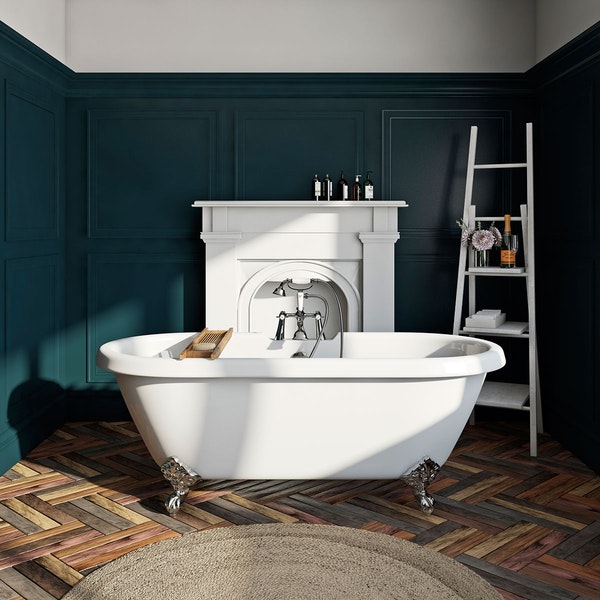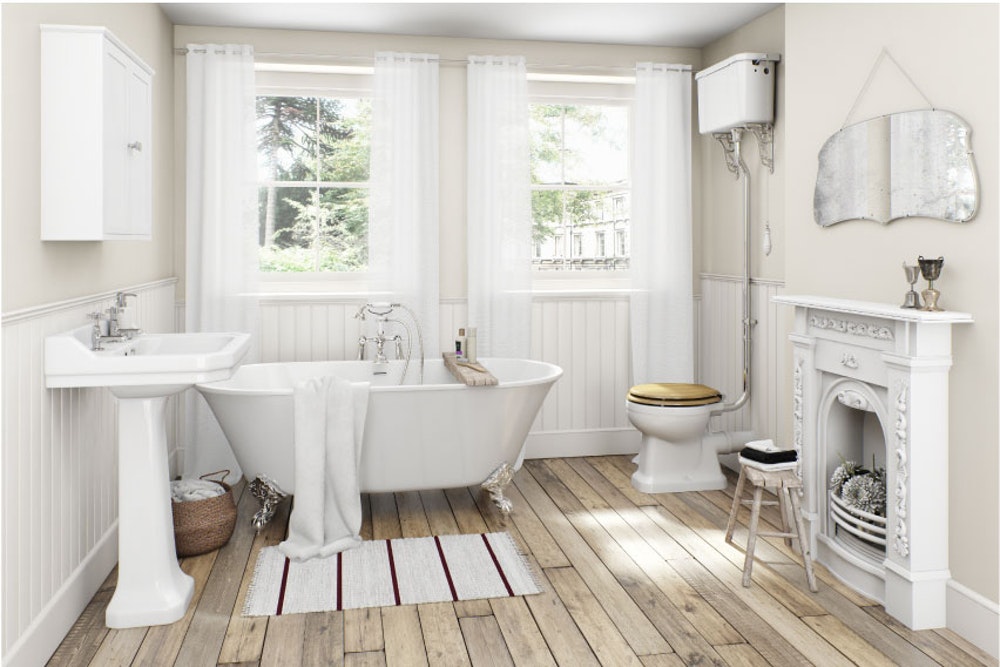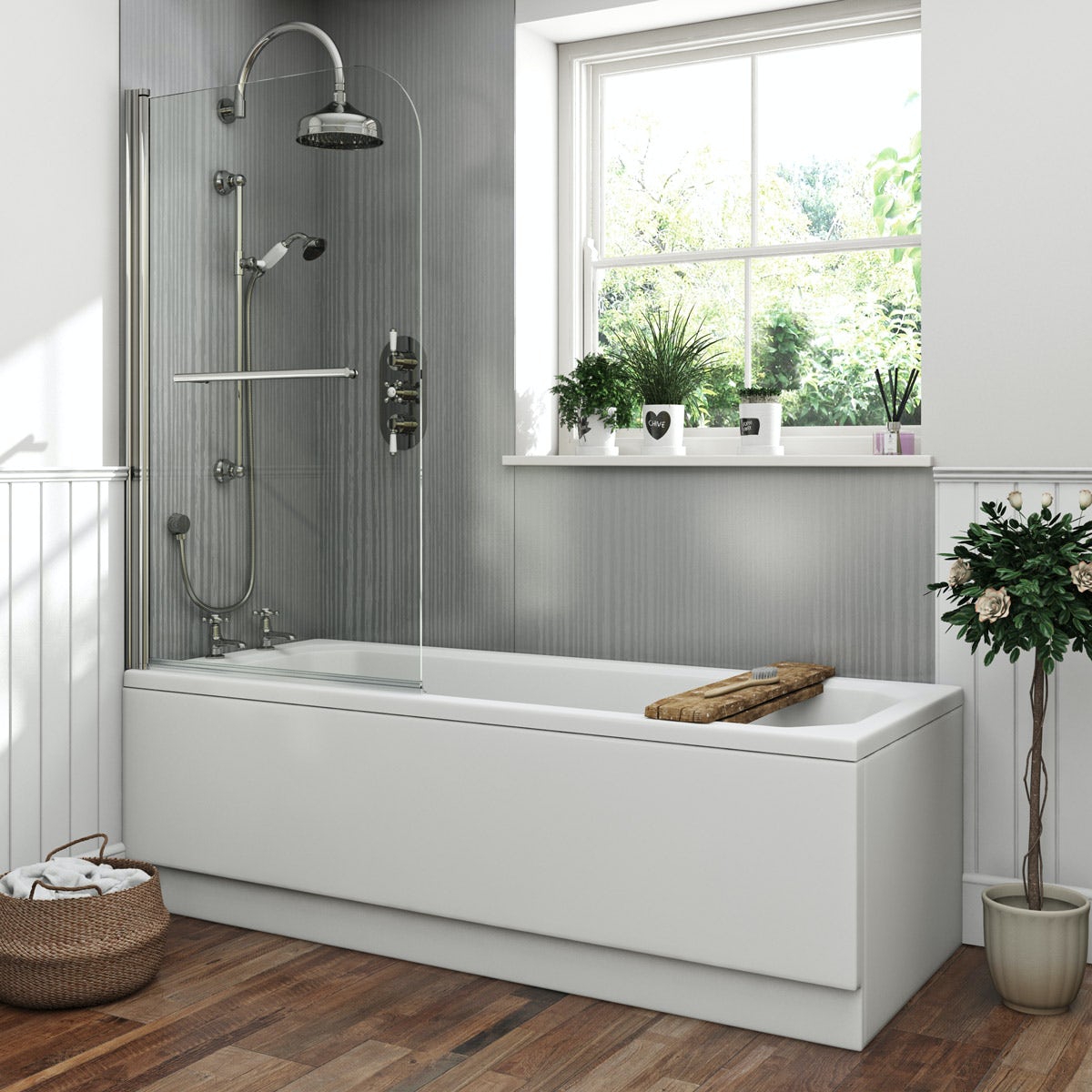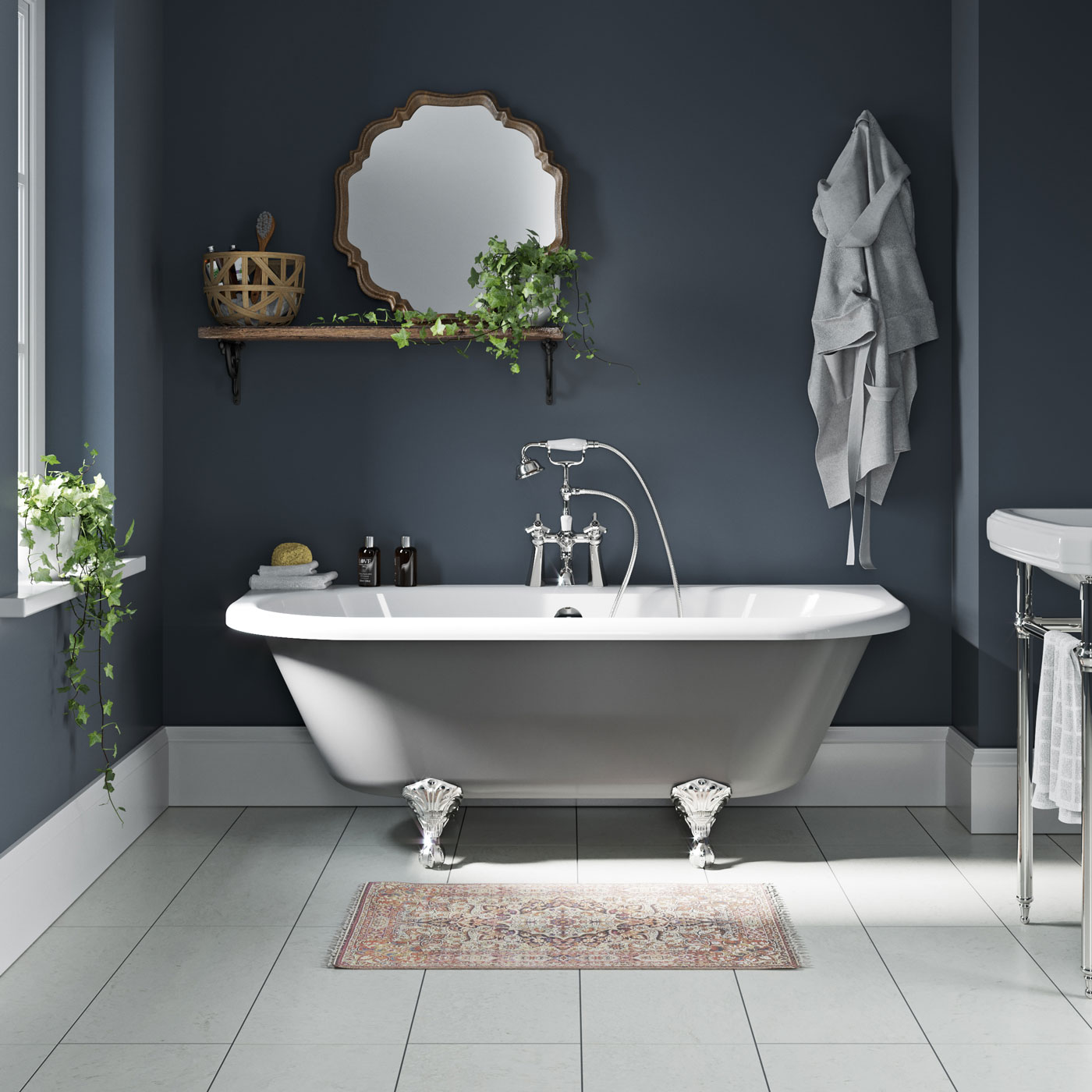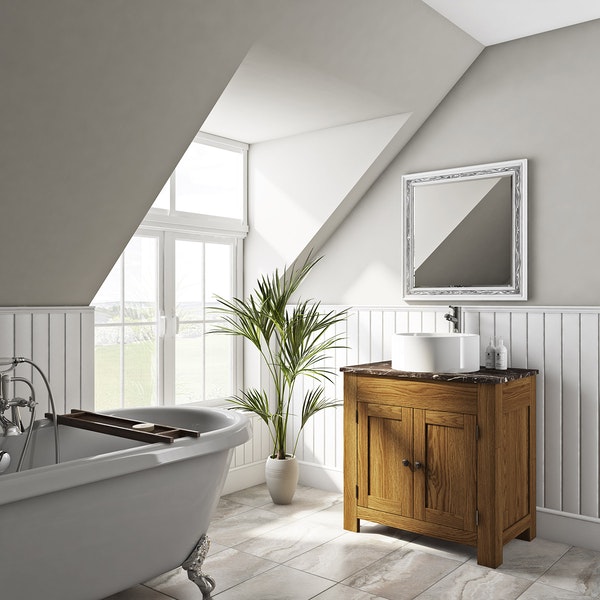Baths, they’ve been around since the days of Ancient Rome. We’ve come a long way since then, with modern innovations and all the latest features and accessories, allowing us to truly relax and unwind at the end of a long, hard day. But with so many options available, how can you decide which bath is right for you? Don’t worry, we’re here to break it all down. This blog post covers everything you need to know about bathtub features and accessories, from showers and jets to non-slip surfaces and more, so you can design the perfect home spa and get the most out of your bathtime. So draw up a warm bath and let us provide you with all the knowledge you need!
Quick Definition
Bath features and accessories can include showerheads, handheld sprays, body jets, taps, bath mats, and more. Many manufacturers offer special options such as digital interfaces, temperature control systems, and massage jets to provide an even more luxurious bathing experience.
Types of Bath
When it comes to baths, there are a variety of different types available on the market today. Each type of bath is designed to fit varying needs and preferences. Depending on the size of your bathroom, you may find that some types are more suitable for certain situations than others.
The first type of bath that may come to mind is an alcove tub. An alcove tub is often installed in a three-walled alcove. This type of bath is a great choice for smaller bathrooms as it often fits snugly into the corner space and its lipped edges allow for the installation of a shower curtain for added privacy. Alcove tubs range from basic designs to more stylish models, making them an ideal choice for any budget and design style preference.
The next type of bath is known as a freestanding tub. Freestanding tubs are mounted directly into the floor and can come in either vintage or modern styles, making them an excellent choice for any décor style preference. They also provide a luxurious addition to bathrooms as they offer ample room for soaking and can be accompanied with custom fixtures such as handles and showers.
Finally, drop-in tubs are another popular option among homeowners looking to upgrade their existing bathroom space. Drop-in tubs are installed right into your flooring and the walls feature cutouts where tiles can be set for added visual appeal. This type of installation has become increasingly popular as it allows homeowners to customize their tub’s placement within the overall design of their bathroom space.
No matter which type of bathtub you decide on, it’s important to make sure that it fits both your budget and lifestyle needs before making a purchase decision. The next section will look at different designs available when purchasing a new bathtub, so readers can find the perfect one that meets their individual requirements.
Different Designs
When it comes to baths and accessories, the possibilities for design are endless. Some of the most common bathtub designs include alcove baths, skirted tubs, free-standing tubs, clawfoot tubs, and soaking tubs.
Alcove baths are designed to fit flush against two walls and provide a convenient bathing solution where space is limited. Skirted tubs provide an attractive and practical way to conceal any surrounding pipes or vanity units. Free-standing tubs offer an elegant and timeless look that can become the centerpiece of any bathroom. Clawfoot tubs give a classic but contemporary feel, and also suitable for those without a lot of space constraints. Finally, soaking tubs are ideal for those wanting a long and deep soak in the bath at the end of a long day.
However, no matter what design of bath you choose, make sure it is made from rust-resistant materials for durability. Additionally, consider any other features that could enhance your bathing experience like shower heads or built-in grab bars. All these factors should be taken into account when choosing a bathtub design that’s perfect for your home.
With this in mind, let’s explore the range of materials available to create your dream bathtub. The next section will discuss different materials used to make bathtubs including acrylic, cast iron, porcelain enameled steel, fiberglass and stone composite.
Essential Points
When selecting a bathtub design, there are endless possibilities to choose from. Common types of designs include alcove baths, skirted tubs, free-standing tubs, clawfoot tubs and soaking tubs, each with its own unique feel and look. Make sure that the bathtub is made from rust-resistant materials such as acrylic, cast iron, porcelain enameled steel, fiberglass and stone composite for durability. Consider features like showerheads or built-in grab bars when making your selection to provide an even better bathing experience.
Different Materials
When it comes to bathtub materials, your options range from stylish and long-lasting cast iron, to soaking and lightweight acrylic. Each material has its pros and cons, so it’s important to be familiar with each one before making a final decision.
Cast iron is the ideal material for people looking for a classic style, as well as superior sturdiness and durability. Because cast iron is nonporous, it also repels dirt and bacteria, meaning that it’s much easier to keep clean. The downside of cast iron bathtubs is that they can be heavy and expensive. They also take longer to heat than tubs made from other materials; this makes up for some of the extra cost since you won’t need to heat them for as long.
Acrylic tubs are the most popular choice among homeowners due to their affordability, lightweight design, and ease of installation. They’re also more efficient at retaining heat than cast iron models, so you won’t have to run the water for very long before getting in a blissfully hot bath. Acrylic tubs are not as durable as cast iron models, however, so keep in mind that they may need to be replaced sooner than traditional metal tubs.
For those looking for a middle-ground between acrylic and cast iron tubs, there are other hybrid models on the market made from both materials. These models take all the benefits of acrylic (affordability and versatility) and combine it with the durability of cast iron. While these are generally more expensive than just standard acrylic models, they still cost significantly less than a pure cast iron unit.
No matter the material you decide to go with, make sure you understand all the advantages and disadvantages of each one before making a final decision. Now that you have a better idea of the best materials available for different types of bathtubs, let’s move on to discussing different styles you can choose from.
Different Styles
When it comes to bathtubs, there are several different styles that can be used. From classic designs to sleek, modern models, there is something to suit every taste and budget. For those looking for a more traditional feel in their bathroom, a freestanding tub may be the way to go. Freestanding tubs come in a variety of shapes and sizes and have a timeless look that will never go out of style. For those wanting an updated look but don’t want to completely remodel their bathroom, drop-in bathtubs are becoming increasingly popular. These tubs sit on top of a platform or deck and can easily be customized with tile or stone accents.
For the ultimate in luxury and relaxation, soaking tubs are perfect for creating an at-home spa experience. Soaking tubs provide ample space for two people and often feature relaxing jets for a massage-like experience. Lastly, there are three-piece designs that consist of a shower base, shower walls, and a bathtub wall unit, making them the obvious choice for homeowners who want to incorporate all three elements into one space.
While each style of bathtub has its own unique advantages, it’s important to consider which design will make the most sense given the size of your bathroom as well as your budget constraints. Ultimately, the decision should come down to personal preference and finding the best fit for you and your home.
Now that we’ve discussed different styles of bathtub, let’s move on to exploring different options that exist in terms of materials, finishes, fixtures and accessories that you can use to customize your bathroom oasis.
Different Options
When it comes to selecting a bathtub, there isn’t a one-size-fits-all answer. Different homeowners prefer different styles and options depending on the size of their bathroom, the personal preference of the homeowner, and the level of luxury they want to achieve. Recessed tubs are popular in many cases as they have a low profile that fits closely against the wall. That said, some may opt for freestanding tubs because they provide more space around the tub and can add a unique touch of flair to the bathroom due to its design. For those who want even more relaxation, whirlpool or air baths provide an extra element with jets that massage parts of your body for a spa-like experience.
Some homeowners also choose to swap out a tub for a shower stall to gain more floor space in their bathroom without sacrificing comfort. However, showers lack certain features that are available with bathtubs like soaking depth. Plus, showers don’t typically provide as much versatility when it comes to body types as stand-up showers can be too tall for shorter people and can make getting in and out difficult for those with limited mobility.
No matter which style you select, there are several other important considerations to think about such as shape, materials used in construction, and accessories that will help give your bath its unique character while providing utilitarian purpose. After considering all options available, readers can move onto the next section to learn more about specific features of bathtubs on the market today.
Features of Bathtubs
When it comes to bathtubs, the features available can range from the practical to the luxurious. Incorporating modern technology into the bathroom makes for an enhanced bathing experience and can add perceived value to your home.
One popular bathtub feature is adding a walk-in bathtub with a door. This allows safe and easy access for those with limited mobility, decreasing the chances of slips or falls in transitioning. There are also soaker tubs that are designed with extra depth and built-in seating for greater comfort and relaxation. Hydrotherapy systems are also increasing in popularity as they provide warm air baths or water massage—offering relief for achy muscles due to arthritis and other musculoskeletal issues. Lastly, installing jetted systems provides top of the line relaxation. Jetted systems contain strategically placed jets that agitate either air or water, allowing targeted relief for tension points throughout your body.
On the other hand, some people feel that too many bells and whistles in a bathtub detract from its original purpose—an old school soak. These folks may feel that the addition of any electronic components takes away from its simplicity and candor, deeming them over-indulgent luxuries more suited for show than practicality.
Adding features to a bathtub depends on individual needs, lifestyle preferences, and budget constraints; however it is important to assess all available options when making your decision. Now that you know about some of the possible features available on a bathtub, the next step is reviewing shower jets.
Shower Jets
Shower jets are fixtures that produce a steady flow of pressurized water designed to spray the walls and floors of the shower, providing users with a spa-like experience. While there are generally two types of shower jets – body jets that spray a concentrated and powerful flow of water at specific points on the user’s body, and wall jets that produce a general misty effect across the entire shower area – both can provide the user with a stimulating and relaxing massage-like sensation.
Traditionally, shower jets used more water in comparison to standard showers and were thought of as an energy-intensive feature. Advances in technology have allowed for increased efficiency, however, with contemporary fixtures using up to 50% less water than old models. This has led many proponents to argue that shower jets can be environmentally sound if installed correctly.
On the other hand, some critics have expressed doubt regarding their energy efficiency. Since it takes additional energy to power the jets, some argue that their potential savings in water consumption may still fail to counteract their cost in electricity. Careful consideration should be taken when deciding whether or not to install shower jets due to these questions of sustainability.
After evaluating all aspects of shower jets, it is time to switch focus and explore how one might expand the bathtub in terms of features and accessories.
Expanding the Bathtub
When it comes to expanding your bathtub beyond its standard size, homeowners may find they have a range of options. On the one side, installing a custom-sized or oversized bathtub can bring additional comfort, luxury, and design choice. Such larger tubs commonly include features such as armrests and greater depth for those who wish to relax for longer periods in their bath. On the other hand, taking out the existing tub and replacing it with the larger one requires extensive plumbing updates and fixture replacements that could add complications to the overall design of the bathroom.
Further options for expanding the bathtub may involve adding fixtures such as whirlpool jets for hydrotherapy treatments or an adjustable showerhead for therapeutic massage. These accessories require modification to the plumbing structure in order to be added as well as potential electrical wiring depending on the model chosen. Homeowners should consider both these factors when considering these kinds of additions to their bathtub.
With regard to expanding the bathtub, homeowners must balance comfort and convenience with cost and time in decisions they make. Moving forward into the next section, we will look at different types of spouts and faucets available for baths so that you can make an informed decision about which spouts and fixtures fit best within your bathroom’s structure.
Fixtures and Spouts
Fixtures and spouts are two necessary components for bathtubs that really complete the overall look of any bathroom. When it comes to selecting these features, aesthetics is obviously a priority, but there are other factors to consider as well. Consider both material and shape when making a choice.
For fixtures, metal is typically the most popular material due to its durability and gleaming effect, but if you’re looking to add a more modern or bold design element, consider choosing a fixture with an interesting shape or color. Likewise, spouts come in various shapes: single-handle faucets, tubular designs, cross handles and angled valves are just a few options. Whichever style you choose should fit in with the overall look of your bathroom space.
And while purchasing both fixtures and spouts can seem like an intimidating task at first, you’ll be able to find plenty of products from top industry names that will fit any budget. Don’t feel pressured into buying blindly – compare prices before making your decision.
Now let’s look at lighting features which can add a unique touch to your bathroom space.
Lighting Features
When it comes to lighting up your bathtub, you will be presented with a range of different options. Many modern bathrooms feature ambient LED lights, enhancing the atmosphere and creating a relaxing oasis. LED lighting can also provide illumination to make bathing easier and is available in many colors that can be adjusted.
Many people opt for a more traditional approach to brightening up their tub by including a fixture above the bathtub, adding style as well as practicality. This type of lighting is most often used as ambient lighting, or as task lighting such as a reading light. For those seeking a more energy-efficient option, recessed lighting is a popular choice that can help to create attractive focal areas in the bathroom.
Alternatively, some may choose to use natural lighting to bring sunlight into the bathroom. This can be a great way to save money on energy bills and can help create an inviting atmosphere during the day time. However, it’s important to consider privacy when utilizing natural light in your bathroom.
No matter what type of lighting you end up selecting for your bathtub, it’s important to remember that safety should be your top priority. All fixtures should conform to safety regulations, and all exposed wiring should be checked regularly. Now that we’ve discussed the importance of good lighting around your bathtub, let’s move on and discuss other ways you can enhance your tub experience with accessories.
Enhancing Your Bathtub
For those looking to spruce up their bathtub, there are many options available. First, it’s important to consider the color of your tub versus the wall tiles, accents and accessories you choose. Selecting colors that contrast or complement one another can give an extra touch of style to an otherwise mundane bathroom fixture. For added flair, you may also select a unique material such as copper, bronze or granite instead of the traditional white and ceramic varieties.
One way to instantly enhance your bathtub is with surface enhancements such as decals and stickers. This can easily give your tub a new look without replumbing or taking drastic remodeling measures. You can also opt for tub wraps, which provide the appearance of ceramic tile without having to rip out existing fixtures. Acrylic liners are another option for a full-enclosing finish that comes in multiple colors and textures. A further customization option is seamless wall panels which snap together to cover all exposed surfaces of your bathtub for a sleek, modern look.
On the other hand, some homeowners view surface enhancements as a temporary solution and believe nothing can really compare with renovations involving high-end materials like marble or quartzite. This type of remodeling would require more money and time to complete but could ultimately result in a stunning transformation that enhances durability and longevity while adding value to any space.
However you decide to enhance your bathtub, the possibilities are endless. From subtle changes with decals and wraps to more dramatic installations with custom tile or stone walls, there’s sure to be something perfect for creating your ideal design aesthetic. The next section will explore another potential way to upgrade your oasis – surface enhancments.
Surface Enhancements
When considering bathtub features, surface enhancements are an important factor. Surface enhancements are materials used to improve the appearance and feel of a bathtub such as improved glazing, paint, or sealants. Depending on what material the bathtub is made from and its intended use, many different types of coatings can be used.
Glazing is a common surface enhancement for enameled steel tubs and cast iron tubs. Some brands offer extra thick layers that are more durable than standard enameled glazes. In addition to being long lasting, glazed finishes also help create a smoother surface which requires less cleaning.
Using paint is another option to give a bathtub surface a new look. While it does not improve durability some brands can offer custom colors to match the bathroom décor. It’s important to note that paints may require more maintenance than some other coatings.
For those looking for an alternative finish, sealants are a great choice. Sealants are able to make surfaces water repellent while at the same time creating additional protection against staining and mildew growth. They are also available in both clear and pigmented versions to match other features in the bathroom, such as tiles and grout lines.
Surface enhancements can greatly improve the look and feel of a bathtub but it can be difficult to decide which one will work best for your needs. Be sure to research all the options available and consider both installation costs and possible future maintenance requirements before making a decision. With the right surface enhancements, you’ll have a beautiful and functional bathtub for years to come!
The next section will discuss sprays and jets – two other popular features often found in modern baths today. From traditional rainfall showers to whirlpools filled with dozens of individual jets, these added elements can greatly enhance your bathing experience!
Sprays and Jets
Sprays and Jets are the water feature that may be installed in a bathtub, providing an enhanced bathing experience. They come in several forms, from low pressure hand shower wands to sophisticated multi-port systems designed for complete body coverage. While some sprays and jets don’t provide much of a benefit beyond aesthetic appeal, others can offer a full-body massage on par with those of professional spas.
When considering whether to install sprays and jets in a bathtub, there are many things to consider. On the plus side, these features can help relax sore muscles and soothe away tension while increasing the water pressure of your current bathroom fixtures. However, they also can require additional plumbing modifications or electricity if you select a model with electronically-controlled jets. This could add to the overall expense of installing a new bathtub system. Additionally, not everyone enjoys the sensation of being massaged by sprays and jets—some individuals find it too intense for comfort.
In weighing the pros and cons of having sprays and jets in a bathtub, one must make sure that their particular needs and preferences are met. To ensure that you get exactly what you want from your bathtub system, weigh all the aspects carefully before making any decisions.
The next section will explore further options available when upgrading your bathtub: portable and luxury seats. These types of bath accessories can add further comfort, convenience, and relaxation to your bathing experience.
Portable and Luxury Seats
Portable and luxury seats are an ideal way to enjoy long baths with added comfort, and also provide easy access for those with limited mobility. As these products become increasingly popular, customers can choose from a variety of designs to enhance their bathtubs.
For those on a budget, there are several basic portable seats made of plastic, foam, or mesh materials that are designed to fit most bathtub sizes. Generally lightweight and inexpensive, these models feature adjustable height settings, non-slip rubber feet, and drainage holes. Though simple in design and without many extra features like armrests or reclining backs, they offer a convenient way to get in and out of the tub without struggling.
On the other end of the spectrum are luxury seats that come with many features like massage jets and heated backrests. Built of stainless steel or composite materials, they are designed to last a lifetime and add a touch of opulence to any bathroom. The price tag is often much higher but the investment ensures years of comfortable bathing experiences.
Though safety should always be a priority, each type of seat has pros and cons depending on one’s lifestyle needs. Portable models afford greater mobility for those who need it but may not last as long or provide as much comfort as luxury seats. Luxury options offer more comfort but also tend to run at a steep price point for those looking for more amenities beyond sitting comfortably in the water.
No matter what option is chosen, portable and luxury seats can provide an extra level of relaxation when taking a bath –– making them an excellent addition to any bathroom setup. The next section will cover dramatic bathtub edges –– exploring the different ways you can give your tub some additional flair while staying safe around the water’s edge.
Dramatic Bathtub Edges
When it comes to modern bathroom design, dramatic bathtub edges can be a great way to make a big splash. Literally! Typically constructed of stone, tile, or textured resin, striking bathtub edges offer increasing levels of edge detail and texture that can truly elevate the look of any bathroom. What’s more, many of these stunning tubs utilize timeless pieces that enhance their contemporary look and add a touch of luxury.
On the other hand, some people may prefer an understated look for their bathtub edges. After all, not everyone wants the same ornate features in their bathroom. In this case, opting for straight-edged tubs with subtle details can be a more straightforward yet visually-pleasing way to create balance and add drama to your chosen aesthetic.
Whichever option you choose, bathtub edges provide visual interest and help break up the monotony of traditional rectangular tubs. The next section we’ll dive into is all about decorative bathtub bases – so let’s take a closer look and explore how you can truly make your bathing oasis even more unique and eye-catching!
Decorative Bathtub Bases
Decorative bathtub bases are an important factor to consider when designing a bathroom. They can add unique style and character to a tub, helping create a custom interior look. With a wide selection of materials and designs available, there is something for everyone.
The material of the base will play a major role in its appearance and durability. Porcelain, ceramic glaze, stone, or marble are often used for decorative bathtub bases because they are easy to clean and maintain. Metal bases, such as copper or bronze, are becoming more popular due to their durability and modern look. There is also the option to use wood which adds a rustic feel to the space.
Something that must be taken into consideration is ease of installation. Some materials require special equipment when fitting them as part of the overall design. It’s important to consider whether any alterations to the floor or walls might be necessary when choosing the base.
Design wise there are a range of styles and patterns that can be chosen from. Whether it’s sleek modern lines or ornate patterned detailing – there’s sure to be something that will suit everyone’s taste. Popular designs include traditional floral patterns with floral borders encircling the base tile. Other options include randomly placed mosaic tiles which give depth to the design while creating an illusion of movement and texture in the room.
Overall, careful consideration must be given when selecting a decorative bathtub base, as it should tie into your overall decorating style while being durable enough to withstand water exposure without degrading over time.
The next section will focus on different shapes; identifying which materials work best for individual shapes presented in baths like round, clawfoot, corner and slipper tubs.
Different Shapes
When it comes to bathtub shapes, many homeowners are having a hard time deciding which one is best for their bathroom space. The most common shapes for modern bathtubs are rectangular, square, corner, and oval, but there are also more unique shapes such as hexagonal and trapezoidal. While each shape offers its own benefits and drawbacks, it ultimately boils down to personal preference.
Rectangular bathtubs have a classic look that fits well with traditional bathrooms. However, they could be difficult to fit in tight spaces where a corner or other oddly shaped piece of furniture may be present. Square bathtubs offer great visual appeal and allow more flexibility in terms of location in the bathroom compared to rectangular options. Some people argue square bathtubs are easier to clean compared to other options since they lack corners but this is debatable.
Corner bathtubs can create interesting design elements within the bathroom whilst also providing plenty of comfort due to their deeper depths. Unfortunately, these tubs do not fit into all bathroom layouts as the exact corner for installation must be considered carefully prior to purchase. Oval tubs have become increasingly popular in recent years due to their striking looks and larger depths which provide ample room for two people. These tubs generally require more floor space however making them impractical in smaller bathrooms.
Uniquely shaped bathtubs including hexagonal and trapezoidal designs are becoming more widely available as homeowners become more adventurous when remodeling their bathrooms. While these options offer a touch of character, they may prove difficult to source specific accessories and parts for replacement purposes further down the line.
With so many different options available when it comes to bathtub shapes, it’s important to carefully consider all aspects before making your decision – regardless of whether you choose a classic or unique design solution. Now that we have discussed the various shape possibilities with regards to bathtubs, we will move on to discuss the different colors available in our next section.
Different Colors
When it comes to choosing bathtub features and accessories, one of the decisions you’ll have to make is what color scheme you prefer. While having a bathtub in a solid color is an aesthetically pleasing choice, customizing your tub with different colors for fixtures or accent pieces can give you more customization opportunities. Installing multi-colored tiles on the wall behind the tub is also a popular choice, as this helps bring attention to the bath itself.
On one hand, opting for a solid color gives you a cleaner look and allows you to use your own creativity when decorating around it. For example, installing colorful tile or adding accents such as decorative towels may be enough to dress up the room without taking away from the look of the tub itself. On the other hand, multi-colored tile options can provide more flair and create a unique space within your bathroom. There are also rainbow fixtures available at most stores which enable you to choose whatever colors best fit your style.
No matter which option you choose to go with, selecting colors that match the overall theme of your bathroom is sure to pull the entire design together. With careful consideration and some creative inspiration, you can create a unique and inviting space within your home just by incorporating brightly colored features and accessories.
After selecting colors that work well within your design plan, it’s time to consider even more convenience when it comes to bathtub features and accessories. In the next section we will explore options for making bath time even easier with a range of modern conveniences.
More Convenience
When it comes to bathtub features and accessories, one of the most important considerations for many homeowners is convenience. One of the most convenient options is a built-in shower bench, which can provide support to those with mobility issues and added stability for sitting and showering. In addition, walk-in tubs and showers are becoming increasingly popular as they make it easier to access the bathtub without having to step over a ledge.
However, not all added convenience features are advantageous. For example, though handheld sprayers can provide easy access, they often require more maintenance than traditional faucets. Also, electric pumps can be tempting with their promise of a powerful jet stream of water, but they also require frequent filtration to avoid bacteria buildup and can become problematic when you try to switch out the shower head or add additional fixtures.
Despite certain potential drawbacks, there are many convenient solutions on the market such as safe grab bars that will help individuals keep their balance while in the shower or bathtub. Installing a teak bathmat on the floor of the bathtub can also reduce slipping by providing better traction. There are also innovative enhancements like motion-activated LED lighting systems and personal music docks for listening to tunes during baths.
Overall, an array of features and accessories can ensure maximum safety and convenience in your home bathtub space so that you can have peace of mind while bathing or showering. With an assortment of options available, you should have no trouble finding what works best for your needs.
In conclusion, determining which features and accessories offer maximum convenience is essential when deciding which solutions are right for you. In the next section we’ll discuss the value of considering long-term durability when considering bathtub features and accessories purchases.
Conclusion
When considering bathtub features and accessories, it’s important to think about both the aesthetic and practical impacts they may have on your bathroom. From luxury additions such as whirlpool systems and heated bathmats, to functional add-ons such as grab bars, nozzles, and jets, all of these components can drastically improve your bathing experience. However, one must consider the associated costs of installing or replacing such features and accessories. For those on a budget, opting for less expensive materials like plastic or rubber could be a great way to enhance a bathroom’s affordability without sacrificing certain benefits. Though more expensive materials such as bronze or brass may provide superior performance and durability for the long term. Ultimately, what fits best in ones budget should be the deciding factor when shopping for new bathtub features and accessories.
Responses to Common Questions
Are there any unique bathtub features or accessories that can improve my bathing experience?
Yes, there are a variety of unique bathtub features and accessories that can greatly improve your bathing experience. Consider adding a shower handheld wand to make rinsing off easier and more comfortable; it also helps with hair washing. Another great addition is an adjustable height headrest, which can provide extra support while you relax in the tub. Finally, heated infrared back massage panels release infrared light waves that penetrate deep into your muscles, offering much-needed relief from tension and soreness. These massage panels can be adjusted to whatever pressure feels best for you. With these and other interesting bathtub features and accessories, you can certainly enhance your overall bathing experience!
Are there any creative ways to use bathtub features and accessories to personalize my bathroom?
Yes! There are plenty of creative ways to decorate and personalize your bathroom with bathtub features and accessories. For example, you could choose unique shower rods and curtain hooks to give your bathroom a more individualized look; switch out plain mat sets for textured ones in luxurious fabrics; or add relaxing LED lighting for a soothing ambiance. You can also display items like artwork, plants, and succulents in decorative containers near the bathtub to liven up the atmosphere. Additionally, using coordinating towels, rugs, bath mats and soap dishes can create a cohesive look, while scented candles or reed diffusers can help enhance that all-important spa experience.
What are the benefits of each type of bathtub feature or accessory?
The benefits of each type of bathtub feature or accessory depend largely on the type of tub and user’s individual preferences.
For instance, a grab bar can offer improved safety for those with limited mobility, while jetted tubs can improve circulation and relaxation. Whirlpool tubs are often used to de-stress and relieve tension in the body. Teak bath steps help make it easier to get in and out of the bathtub safely. A handheld showerhead is great for rinsing off after a relaxing bath.
Bathroom accessories such as heated towel racks and aromatherapy diffusers can add a touch of luxury to your bathtime experience. They provide comfort, convenience, and stress relief. These features also tend to add value to bathrooms in terms of aesthetics.
No matter what features or accessories you choose for your bathroom, it’s important to consider your own needs and preferences before making a final decision. With a variety of options available, you’ll be sure to find something that fits your lifestyle and budget.

